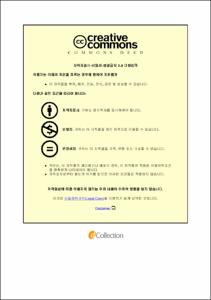A Financial Analysis of Lobster Aquaculture: Reviewing Indonesia Lobster Regulation Management
- Alternative Title
- 바닷가재 양식업의 재무 분석: 인도네시아 바닷가재 규제 관리 검토
- Abstract
- One of the aquaculture commodities that have high economic value and potential to be developed in Indonesia is lobster aquaculture. The potential number of Indonesian lobster seeds reaches 12.3 billion (Puerulus/transparent lobster). Indonesia has 6 tropical lobster species that located in Indonesian waters: 1) Sand green lobster (Panulirus Homarus); 2) Batik lobster (Panulirus longipes); 3) Pearl Lobster (Panulirus Ornatus); 4) Rock lobster (Panulirus penicillatus), 5). Brown bamboo lobster (Panulirus polyphagus); and 6) Green Bamboo lobster (Panulirus versicolor).
Tropical lobster or spiny lobster (Panulirus spp. or Palinurus spp.) is one of the four main categories of commercial lobster species in the world: European lobster (Homarus Gammarus), American lobster (Homarus americanus), rock lobster (Jasus spp.), and tropical lobster or thorny (Panulirus spp. or Palinurus spp.).
The most dominant seed lobster species which is caught by fishers are Panulirus Ornatus and Panulirus Homarus. Most of the lobster seeds caught are exported to other countries to raise in lobster farming. This study aims to analyze the financial feasibility of lobster farming (for the two species) using capital budgeting models such as Net Present Value (NPV), Internal rate of Return (IRR), Benefit Cost Ratio (BCR), Payback Period and sensitivity analysis is employed according to the changes in key parameters (+/- 10%).
Discount rate that used in this study is 5% for 20 years. The result of this research shows that the NPV value of Panulirus Ornatus aquaculture in the next 20 years is US$14,392, IRR value of 43%, B/C Ratio 1.28, and getting payback in the second year. While the result of lobster analysis Panulirus Homarus aquaculture is that the NPV aquaculture is US$ 11,564, IRR value is 35.8%, the B/C ratio is 1.27, and gaining payback is in the second year.
Through switching value, lobster selling price and production results are the most sensitive parameters. The figure shows that the price of Panulirus ornatus lobster could not go down more than -15% which is USD $ 22.59 while the selling price of Panulirus Homarus lobster also could not decrease over -13% which is US $ 17.74. If both lobsters price decline to -15% for Panulirus ornatus lobster and -13% for Panulirus Homarus lobster, the NPV of the project or activity will be 0. This score highlights that the project has equal value with the social opportunity of cost capital. Whereas the most non-sensitive level of the parameter in both lobster farming are lobster seed price and interest rate. In figures 8 and 9, the line graph illustrates that the rate of seed price (blue line) and interest rate (red line) is lower compared to other parameters.
A recommendation that can be considered by the government is to review the lobster management regulation. From the studies that have been carried out, it is known that growth-out the lobster is quite beneficial. While in existing scientific journals that the survival rate of lobster seeds in nature is only 1% and lobster seeds are cultured in cages with husbandry and good nutrition consistently, the survival rate can be up to 90%. The recommendation for seed lobster farmers is to try to raise the seed lobsters to the optimal size demanded by the market. Given, by raising lobster it will be more profitable.
- Issued Date
- 2020
- Awarded Date
- 2020. 8
- Type
- Dissertation
- Keyword
- LOBSTER REGULATION FINANCIAL ANALYSIS
- Publisher
- 부경대학교
- Affiliation
- Pukyong National University, Graduate School
- Department
- 대학원 수산물리학과
- Advisor
- Hee Dong Pyo
- Table Of Contents
- CHAPTER 1. INTRODUCTION 1
1.1. Background of study 1
1.2. Problem of study 2
1.3. Objective of Study 3
1.4. Benefit of the study 3
CHAPTER 2. INDONESIA LOBSTER AQUACULTURE & PREVIOUS STUDY 4
2.1. Spiny Lobster 4
2.2. Seed Supply 5
2.3. Seed Fishing 6
2.4. Feeding 7
2.5. Grow-Out and Harvest 8
2.6. Market 9
2.7. Previous Study 13
CHAPTER 3. RESEARCH METHODS 18
3.1. Location of the study 18
3.2. Types and sources of data 19
3.3. Financial Feasibility Parameters and Indicators 19
3.3.1. Net Present Value (NPV) 20
3.3.2. Internal Rate of Return (IRR) 21
3.3.3. Benefit Cost Ratio (BCR) 22
3.3.4. Payback Period (PBP) 23
3.4. Sensitivity Analysis 24
3.5. Incremental Net Cash Flow 26
3.6. Framework 27
CHAPTER 4. RESULT & DISCUSSION 28
4.1. Aquaculture Operation 28
4.1.1. Cage Information 28
4.1.2. Aquaculture Operation 28
4.1.3. Annual Operating Cost 30
4.2. Cost-Benefit Analysis of Policy Implementation 32
4.3. Sensitivity Analysis 35
4.3.1. Sensitivity of Market Price 39
4.3.2. Sensitivity of Seed Price 39
4.3.3. Sensitivity of Feed Price 40
4.3.4. Sensitivity of Interest Rate 40
4.3.5. Sensitivity of SR 42
4.3.6. Sensitivity of FCR 43
4.3.7. Sensitivity of Production 44
4.4. Challenge 44
CHAPTER 5. CONCLUSION & RECOMMENDATION 45
5.1. Conclusion 45
5.2. Recommendation 46
REFERENCES 48
- Degree
- Master
- Files in This Item:
-
-
Download
 A Financial Analysis of Lobster Aquaculture: Reviewing Indonesia Lobster Regulation Management.pdf
기타 데이터 / 1.23 MB / Adobe PDF
A Financial Analysis of Lobster Aquaculture: Reviewing Indonesia Lobster Regulation Management.pdf
기타 데이터 / 1.23 MB / Adobe PDF
-
Items in Repository are protected by copyright, with all rights reserved, unless otherwise indicated.